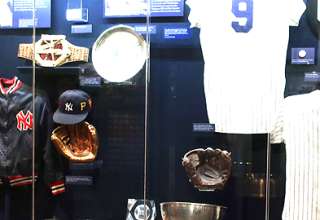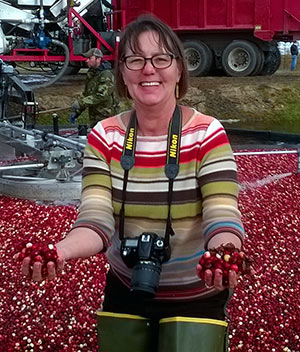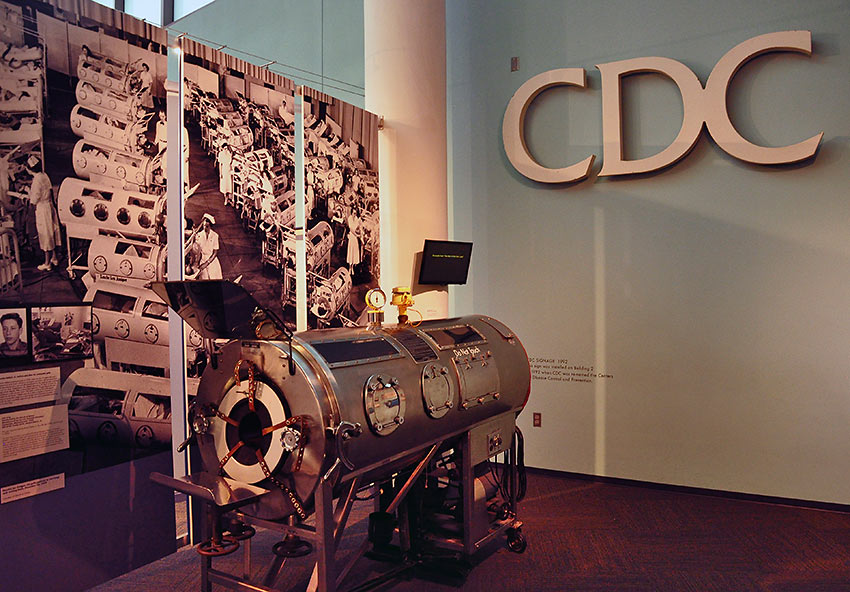
If you’re a germaphobe you might want to stop reading now.
You could be freaked out by the displays in this museum showcasing in sometimes graphic detail the sorts of diseases that — no pun intended — plague humankind.
But on the other hand, you might be reassured knowing highly skilled scientists work 24/7 to fight worldwide health horrors at the Centers for Disease Control and Prevention in Atlanta, Ga.
The David J. Sencer CDC Museum occupies part of the headquarters of the CDC, the only federal agency headquartered outside the Washington, D.C. area. My first clue these folks are, um, deadly serious about their work here? Armed guards at the gate to this vast complex used mirrors to check for bombs under our tour bus and kept their eyes trained on us as we were escorted inside the building. We submitted photo IDs and went through a security screening that would make a TSA supervisor proud.
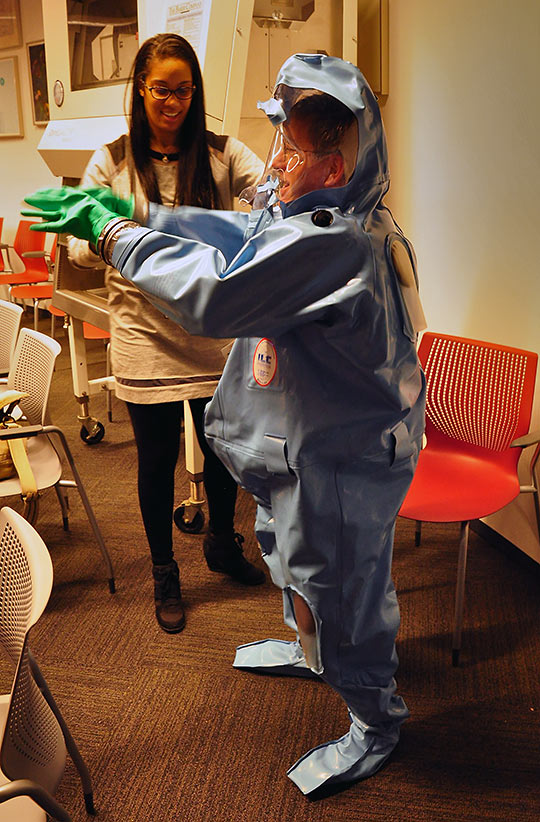
Visitors don’t need to be part of a group to take a free self-guided tour, nor do they need an appointment unless there are more than 10 people in their party. But for groups of 10 to 30, I highly recommend booking tours guided by CDC employees who volunteer their time to tell visitors about the important work that percolates behind these walls. When she isn’t guiding visitors on her lunch break, our docent, Latoya Simmons, told us she studies foodborne illnesses. She specializes in salmonella and e coli. Sweet.
The museum occupies two floors, the top devoted to temporary topics on global health. Through May 1, 2020, “Changing Winds: Public Health and Indian Country” will demonstrate how tribal nations in the U.S. address modern-day health challenges while using traditional knowledge and practices.
Bottom floor exhibits explain the work and history of the CDC. The agency grew out of a desire to eradicate malaria, a big problem in the South in the early 1900s that drew the attention of Robert Woodruff, former president of The Coca-Cola Co. based in Atlanta. He had a hunting preserve and farm hit hard by malaria and created a fund to study the disease at Atlanta’s Emory University. In 1946, the Communicable Disease Center, or CDC, was founded and began work in a small office in the city. Its mission: malaria. A year later, Woodruff helped make a deal with Emory to sell the federal government 15 acres adjacent to the university for the tidy sum of $10. CDC employees ponied up the money, a dime a piece. On this site, the CDC expanded its mission to promote global health, prevent disease and respond to bioterrorism and other medical emergencies around the world. The museum opened in 1996 on the CDC’s 50th anniversary and became an affiliate of the Smithsonian Institution welcoming 90,000 visitors a year.
From historical exhibits about malaria I moved on to other chilling topics such as swine flu, smallpox, the Zika virus, Ebola and post-9/11 issues. Remember the anthrax scare?
Simmons helped members of our group try on head-to-toe biosafety suits worn in some CDC labs. After mugging for cameras we quickly peeled off the blue suits that had become suffocatingly hot and gained a new appreciation for the day-to-day work of scientists here.
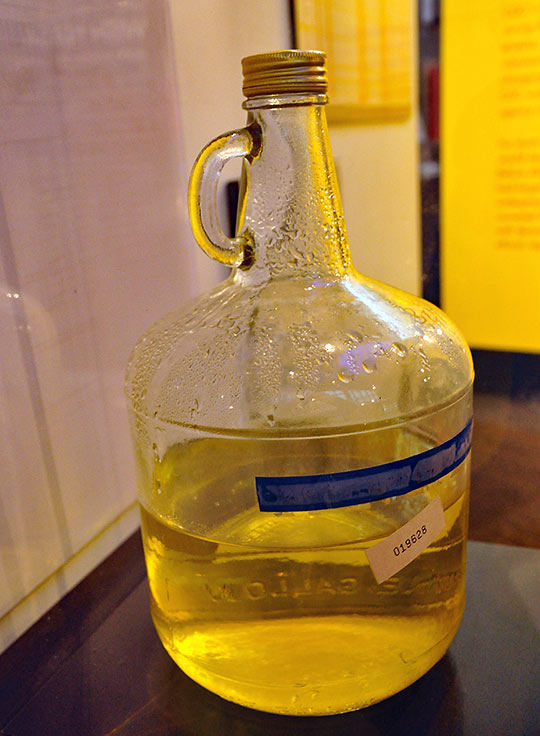
In an area addressing polio — Simmons emphasized the disease is far from being eradicated around the world —stood an iron lung from the 1950s. It reminded me of a torture device from “Game of Thrones.” I rounded a corner and came upon a clear glass bottle of icky yellow liquid containing bacteria — now dead, thank goodness — causing Legionnaire’s Disease, a notable CDC discovery. Another exhibit took me back to the 1969 moon landing. The CDC worked with NASA to quarantine astronauts upon their return to Earth on the off chance they encountered nasty alien bugs in outer space.
Posters, films and artifacts addressed present-day health issues: obesity, cancer, diabetes, smoking, AIDS and sexually transmitted diseases. Though not preachy or scolding, the displays prompted me to leave the museum vowing to lose weight, improve my diet, exercise more and get a flu shot.
David J. Sencer CDC Museum: 404-639-0830



